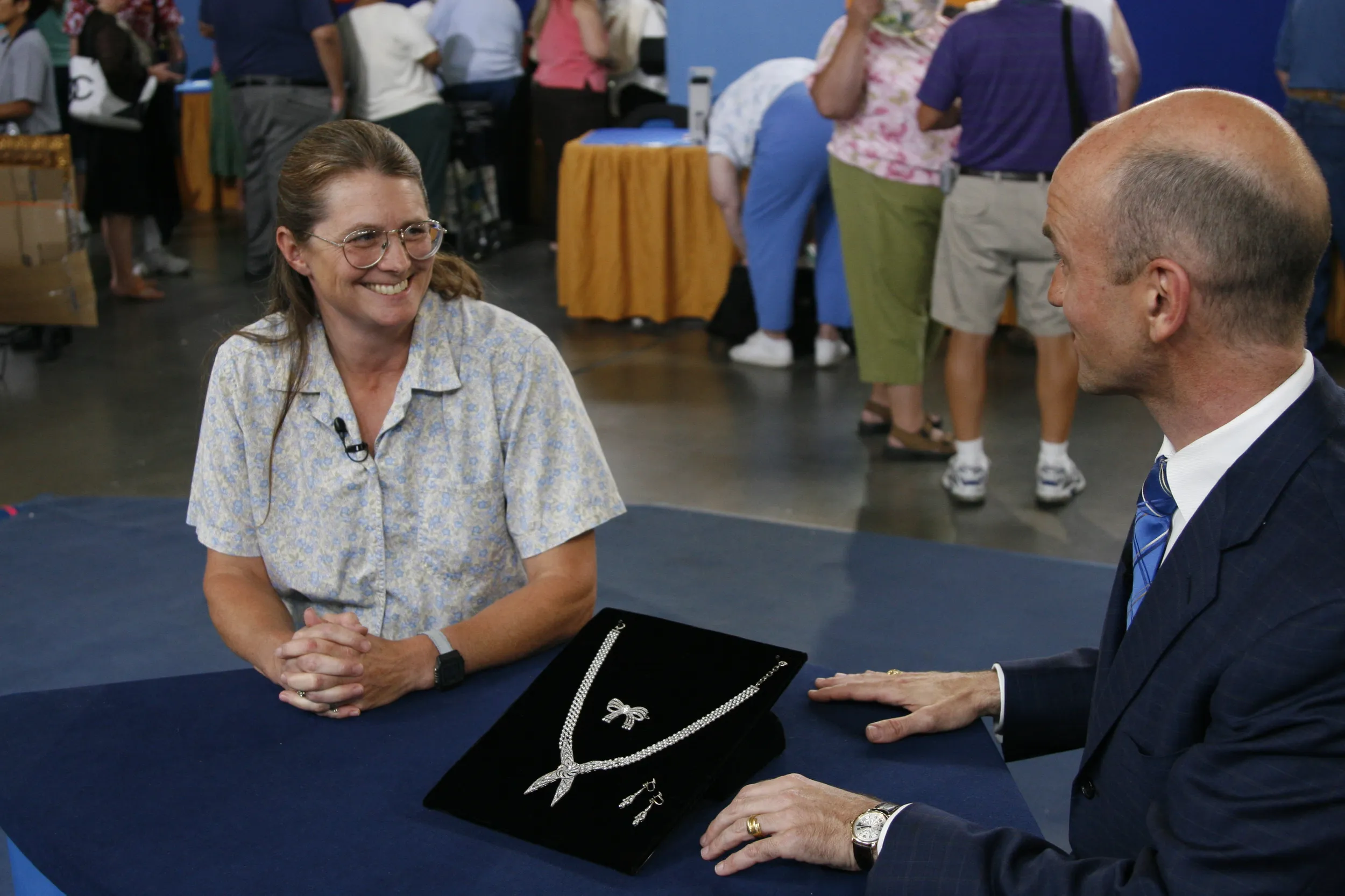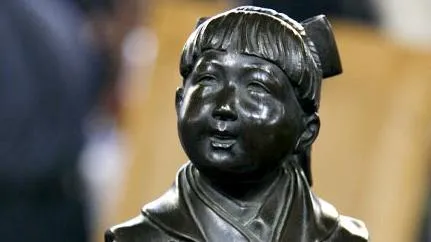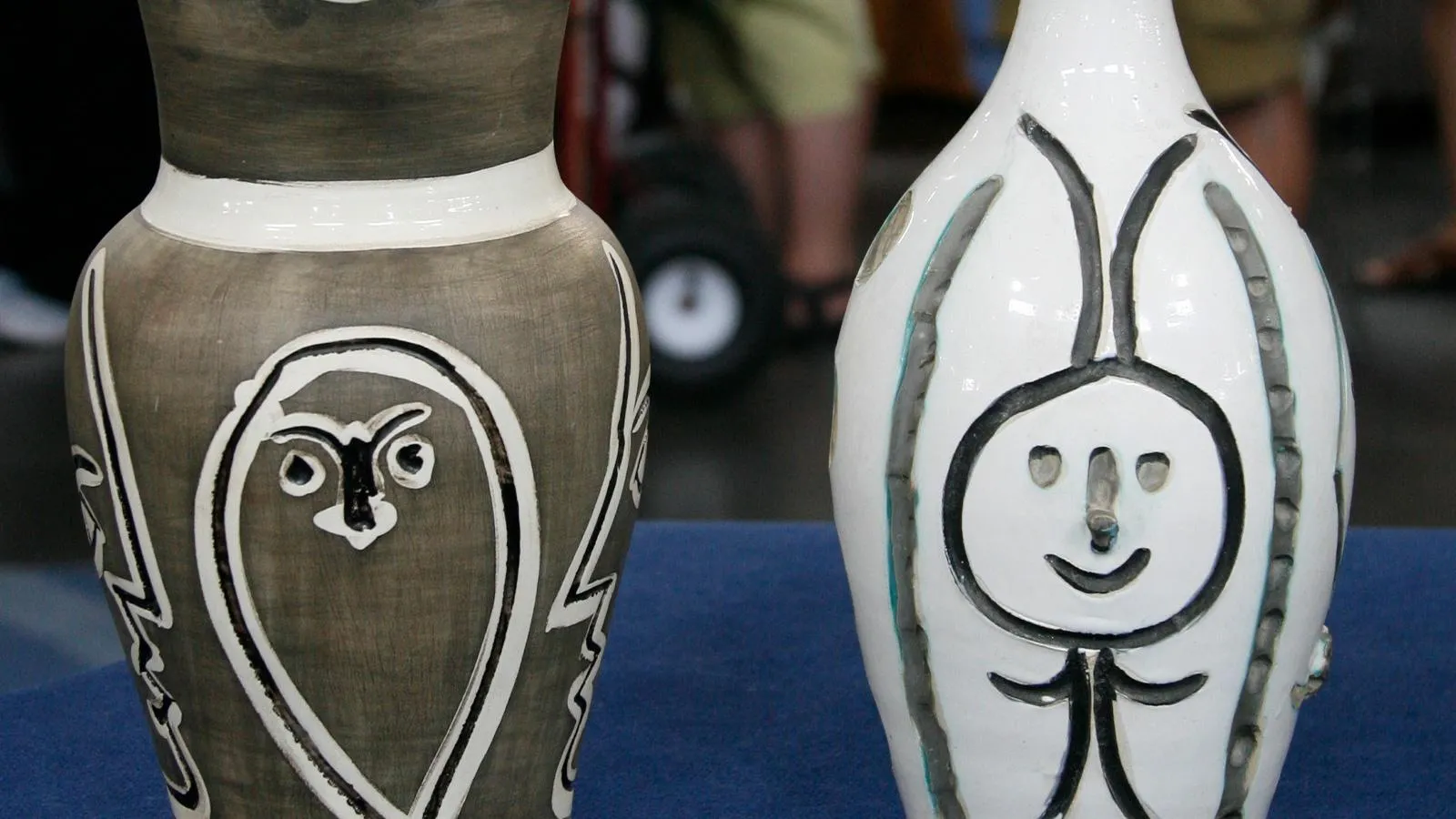GUEST: They come down in the family-- my father's side of the family. They were given to my mother when she married my father. And I have a photograph of them dancing shortly after their wedding, uh, with my mother wearing the necklace and the brooch.
APPRAISER: The, uh, Beau brooch, which is diamond and platinum, this dates around 1900, 1905. This is what we typically refer to as an Edwardian period piece. And many of the indicating styles of Edwardian jewelry is that it's very open, it's lacy, it has this very soft look to it with the design. And with the necklace here, this I would call a transitional piece. The reason being is that the pearl section here is very typical of the Edwardian period. Yet, as we move down towards the central area, there are these very definite chevron and geometric designs that are associated with the Art Deco period, which is typically from about 1920s to 1930s.
GUEST: Mm-hmm.
APPRAISER: So, we've got a transitional piece from about 1915. So it's a nice combination of almost Deco, almost Edwardian. But the one thing that I found most interesting when I looked at these under the magnification is who the maker was, and what is nice about this is that with a very good piece of jewelry, a piece is signed, and if we turn this over on the back here, and we take a look right here on the clasp, the piece is signed "Cartier."
GUEST: How interesting. I never knew that they signed jewelry.
APPRAISER: And on the opposite side, it's signed "Paris." So the piece comes from Paris; it's made by Cartier. And the nice addition to that is, well, the brooch is also by Cartier. So you have two beautiful Cartier pieces.
GUEST: Wow.
APPRAISER: Does this fit into any of your family history that you know of?
GUEST: Yes, an earlier ancestor was an ambassador to Paris.
APPRAISER: Ah.
GUEST: So it's quite likely that it comes from what would have been a great-great-grandfather.
APPRAISER: I see.
GUEST: Living in Paris.
APPRAISER: Well, I think this would be appropriate for his wife to go dancing in Paris. Certainly during this time period.
GUEST: Right.
APPRAISER: And for the value on a piece like this, you know, these are the types of items that collectors are very, very interested in. I would say for insurance purposes, on the necklace, I would have a value of this between $60,000 and $90,000.
GUEST: Okay.
APPRAISER: For the necklace. And for the brooch, between $15,000 and $20,000.
GUEST: Mm-hmm.
APPRAISER: So the insurance value for these two items together would be between $75,000 and $110,000.
GUEST: That's wonderful.













